Not long ago as I write, we were looking at my top ten favourite ZX Spectrum loading screens, and I mentioned it had started out covering all systems, although the majority were understandably weighted towards the systems where I’d spent the most time staring at the screen while stuff loaded on them. Over the course of many months thinking about it, the shortlist ended up with a ton of ZX Spectrum games, but also a decent smattering from Commodore 64 and Atari ST, to the extent that when I eventually came to putting it together, I decided they both warranted a bit more thought and their own top ten lists, which I’m currently putting together and will appear here at some point later. But then there was the rogue BBC Micro game, Repton 3, and while my limited experience of the BBC’s games library was never going to develop into a top ten favourites list, no matter how much thought I put into it, the game itself more than deserves a look, and it deserves it right now!
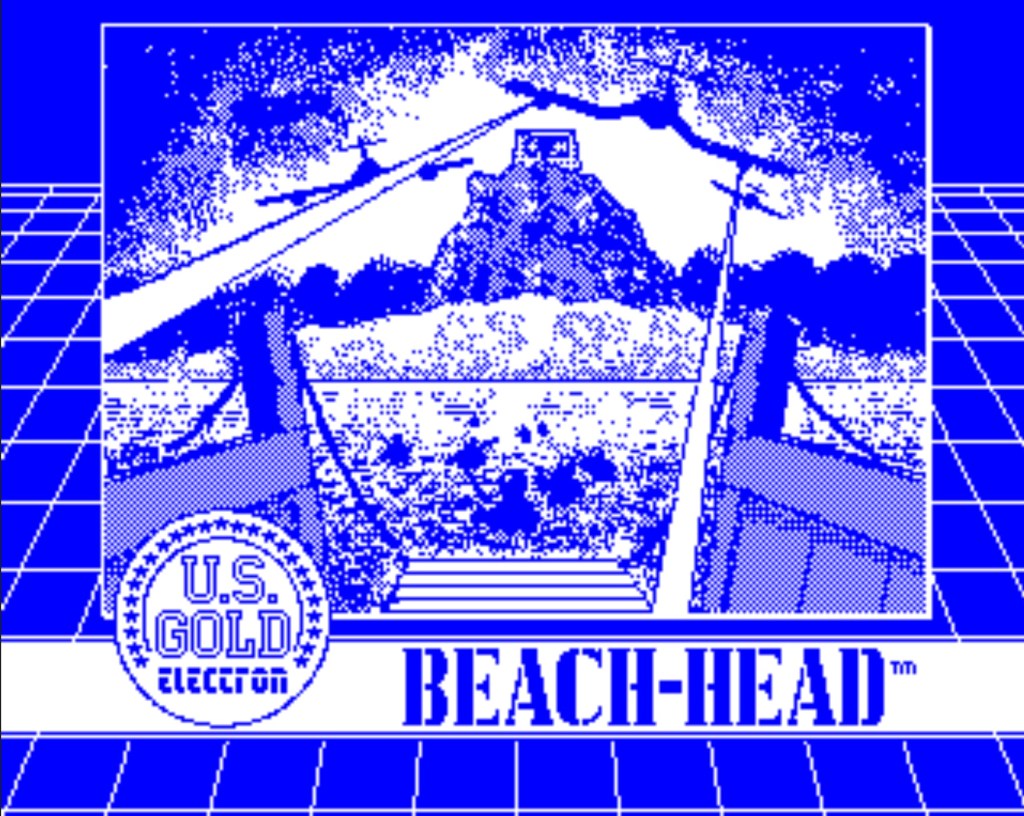
My very first home computer (rather than Atari knock-off console) experience was my next-door neighbour’s Sinclair ZX81, although neither of the boys there were really into it and I only remember seeing it in action a couple of times; instead we’d spend our time there watching martial arts movies or Fame, which they were far more partial too than my brother or me, but they were older and cooler than us, and it was a small price to pay to hang out with them! And that probably also explains that while our first experience of what would become the internet was on their next computer, the BBC B, we never played many games on that either. But we did play Beach Head, which had a corker of a loading screen of its own, as well as its essential version of Chuckie Egg, although I think I first came across that when my middle school got two BBC’s because I have a very distinct memory of being blown away by it in a repurposed store cupboard attached to a classroom that hosted one of them during “computer club” one lunchtime a week! While that might be my favourite BBC game (so far, at least, because I have started a bit of a journey of discovery there recently…), I can’t really argue with Elite being its greatest achievement, although the Atari ST version does rank in my top ten games of all time, so we can give Chuckie Egg that little victory! We’ve been hanging around in 1984 so far, but I reckon it was a couple of years later that Elite was just about the only game a good friend at upper school ever played on his BBC (before that also became an Atari ST), and we’d spend hours on that incredible galactic adventure together at his house. Sometimes, if I was lucky though, Repton 3 would come out to play too!
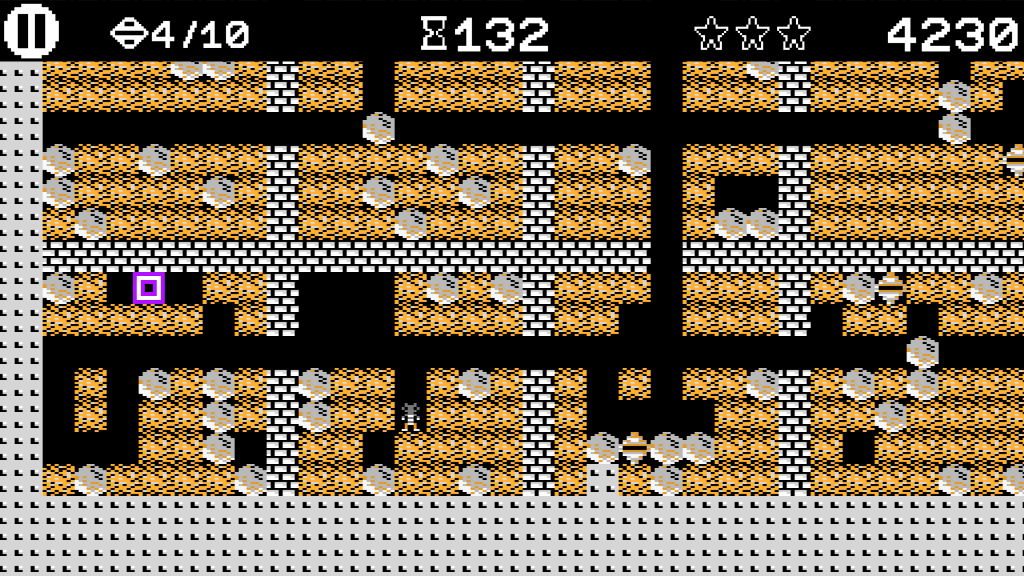
And that’s the total extent of my British Broadcasting Corporation Microcomputer System experience to date, although I am planning to look at a couple of its platformers in particular here soon – the medieval fantasy Wizardore, and the more Chuckie Egg-like Dracula. I’ve always liked the look of Yie Ar Kung-Fu on there too… Not a bad list of games so far though, so let’s jump into Repton 3! I’ve always thought of Repton 3 as a more considered take on my old action-puzzling Commodore 64 favourite Boulder Dash, which in turn came from the original 1984 Atari 8-bit versions. And reading a review of that (because he’d never played it!) is exactly what inspired 16-year old Tim Tyler to create the original Repton for the BBC Micro and Acorn Electron a year later.
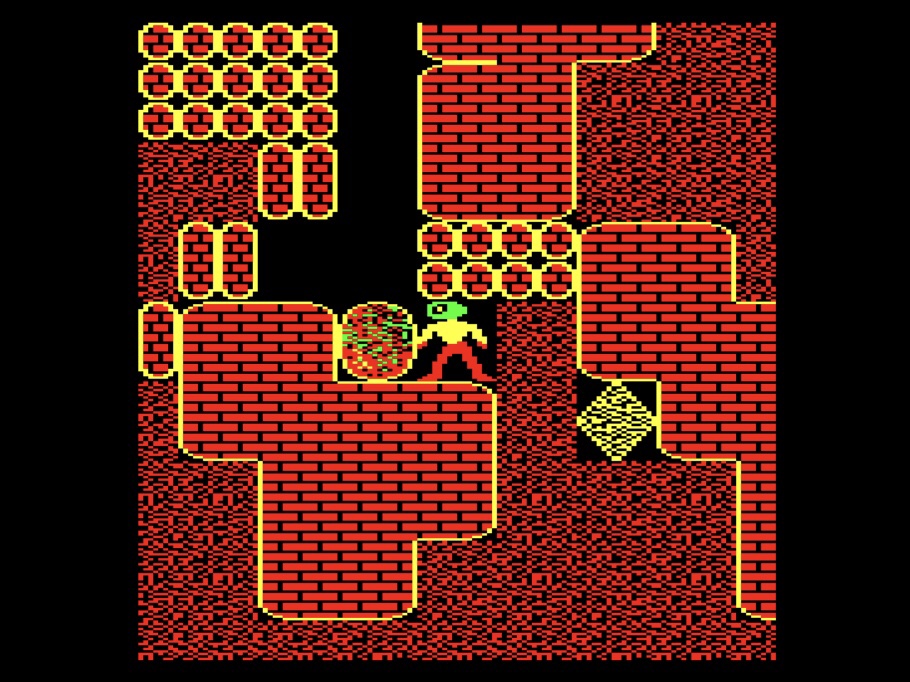
The first Repton was released by Superior Software around the same time as Live Aid, in the summer of 1985. It had you, Repton, a humanoid lizard who is to the BBC what Miner Willy is to the ZX Spectrum, or Cool Spot is to the Mega Drive, looking for all the diamonds hidden around an underground maze and keys to get at the ones locked in a safe while avoiding death from falling boulders and monsters hatching out of eggs, or just running out of time. There were twelve levels, and a cool password system that allowed you to pick up at the last one you got to, but if you finished the game after using one you’d be challenged to do it again without! It only took a few months for a sequel to appear, which arrived in time for Christmas the same year, and it had a lot of new stuff to offer on top of its familiar mechanics. There were new monsters, jigsaw pieces to collect (that in the end will spell out that “Repton 2 is ended”) and some areas had meteors falling out of the sky at you through holes in the roof. And it wasn’t just bigger but was effectively now one giant level with transporters that took you from one completed area to the next, and you could do those in any order but there were no passwords this time. This one’s tough, with loads more that needs to get done or collected or avoided before Repton 2 is ended, but if you picked up its very first release it was also impossible, due to a bug that meant it was missing the final diamond that you needed to collect to finish it!

Repton 3 came a year later, just in time for Christmas 1986 on the BBC and Electron, although the advertised C64 version didn’t arrive until some time later, and the Amstrad CPC one never materialised at all. By this point, Tim Tyler was done with it and handed over programming duties to Mathew Atkinson, although he did design a few of the levels, which, yes, does mean it reverted back to the original’s against the clock, password-saved level-based system, but was twice as big this time. There was a load of new stuff too, as well as new completion requirements for each level, and the game also includes a map editor, and we’ll get back to all of that stuff shortly. Before we fire up anything though, we simply have to stop off at the loading screen that brought us here! To recap my previous discourse on it, but without going into stuff we’ll also get back to, it’s bonkers! For any of the arcade flair the game might lack compared to the more frantic Boulder Dash, it more than makes up for with its sinister loading screen and bizarre cast of characters, all made even more impactful by its choice of minimal but contrasting colours. And on top of that, you’ve got the greatest synthesised speech you’ll hear this side of Ghostbusters on Commodore 64! “Welcome to Repton 3 from Superior Software!”
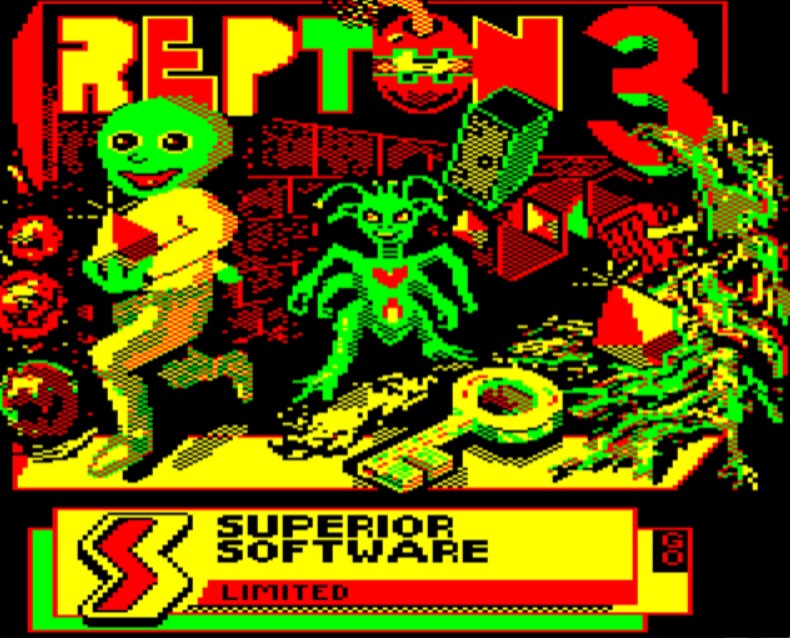
I’ll usually pull out the inlay card or instruction booklet right about now, but even before that glorious loading screen has done its thing you’re confronted by so much information on-screen that I think I’ll borrow from there this time instead! First up, we’re reassured that all our favourite Repton characters have been retained, together with some new ones: a creeping poisonous fungus, time capsules and golden crowns. Phew! We’re then informed how the game’s 24 screens are provided on three files with eight screens in each, and these are Prelude, Toccata and Finale, which more or less increase in difficulty as you progress. Prelude loads up with the game, and to load the others it’s just a click of L on the title screen and type in the file name. In the meantime, we press space to move on to the gameplay, which has you carefully planning your route through each screen in turn, with the aim of defusing the time-bomb lurking somewhere within; it’s worth stating that when it refers to a screen here, it means a multi-directional scrolling level made up of loads of actual screens! Anyway, before you can defuse the bomb, you need to collect all of the diamonds dumped all over the level, freeing some of them from cages and safes that need a key to unlock, and you’ve got to collect a golden crown, and you’ve got to kill all the monsters! It being a time-bomb also dictates that this is all against the clock too, and if that runs down it’s a life lost, although you can reset the clock by finding a time capsule and going backwards in time no less.
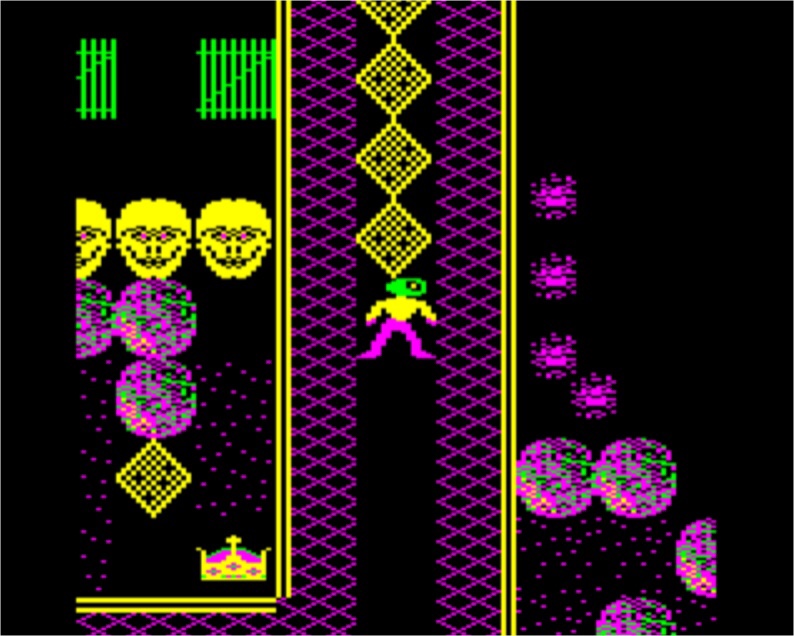
Another press of space and we’re told that each screen comprises a series of puzzles, and many of these are interlinked by a bigger picture, meaning you sometimes have to solve many small puzzles to tackle a large one. The clock isn’t your only enemy, with those pesky monsters joined by skulls, spirits and fungi, and contact with any of those is fatal. And the same is true with those strangely familiar overhanging boulders, which are going to fall on you when unsupported, and that happens by simply walking underneath them and clearing the way, although there’s a few little movement tricks that you work out as you play that actually allow you to direct their descent a bit, which is useful for dropping them onto monsters to kill them. Finally, there’s also eggs that react in a similar way, but when they fall they’ll crack open to reveal another monster to crush to death. Press space again, and a note on the spirits, up to eight of which will be flying about the place, always following the wall to their left until they come upon a cage, which they’ll then enter and become a diamond. Working out how to direct these spirits to the cages is essential because simply dropping a rock on them or even collecting a bunch of diamonds that might be surrounding them is going to daze them and cause them to start moving in an endless circle.
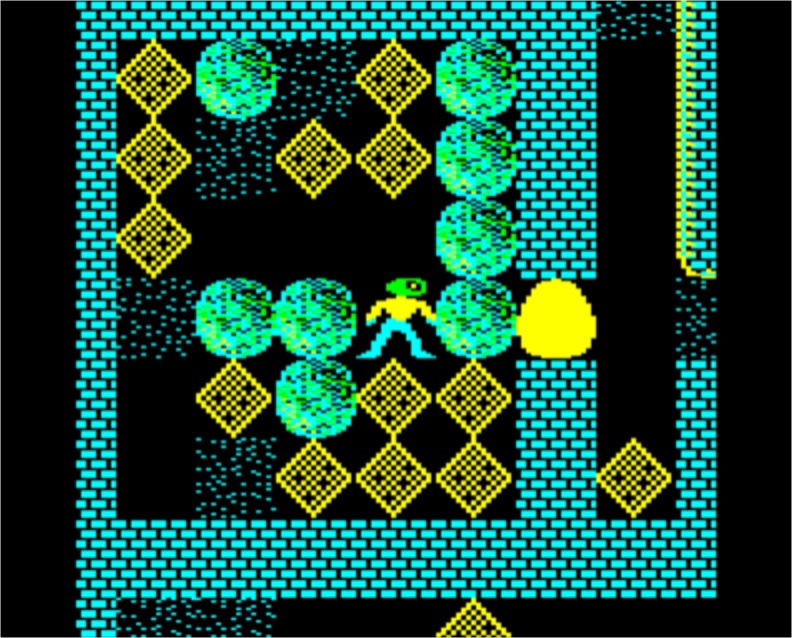
Space again, and we move on to “the poisonous fungus which grows incessantly sealing your fate.” You can trap it by “surrounding it by rocks if you can, or you may never live to collect the golden crown.” I’m getting the impression that Matthew Atkinson was getting into this instruction writing thing by this point! We’re close to the end though, with a final note on up to four transporters on each screen or level that will cause you to rematerialize somewhere else, but each can be used only once. There’s also an explanation of scoring, where five points are awarded for each diamond collected, twenty points for killing a monster and a whopping fifty points for collecting a crown; I have to say, though, that until I just properly read that, in all my time playing this I’d never even noticed any score before! All that’s standing between us and the game now is another press of the space bar to continue, and a rundown of the Repton 3 Series Editor. This is selected from the loading screen by selecting option two for Editor, but be aware that the program will not allow you to edit any of the supplied Repton 3 game screens unless you are able to give the appropriate edit code numbers, displayed after each screen has been completed. You’ve been warned!

Okay, I lied. There’s at least one more press of space… Z is left, X is right, * is up and ? is down, then there’s in-game controls for viewing status, maps, passwords, loading other levels, sound on/off, music on/off, killing yourself (which is probably the handiest feature provided!) and restart. And now, all that’s left is to press the space bar one more time and there’s that loading screen at last! We’ll start by selecting option one for Game and I might come back to option two, the Repton 3 Series Editor, later on, although I’ve never been big on that stuff and that’s unlikely to change any time soon! We now see a handy reminder of some of those controls, and I love that turning sound and music on and off is right at the top – this guy knows his game! You’ve now also got a choice of keyboard or joystick if Z, X, * and ? isn’t ideal for some reason, and once you’re reminded of how to commit suicide, there’s one more control that you’re already familiar with by now to actually start the thing!

Before you even think about moving Repton around, you’re going to want to restart and press space a hundred times again though, because I’ll bet you didn’t make a note of the button to turn the music on and off, and within seconds you’re going to need it! Actually, I’m way exaggerating there because once you’re past the annoyingly shrill school playground nursery rhyme intro thing when the game starts there’s a pretty cool track playing in the background, with a simple but cheerful chip-tune melody playing over a surprisingly well written complementary bassline in support. Apart from the rewarding tinkle of grabbing a diamond, you’ll barely notice the occasional primitive sound effects though, so don’t worry about that particular on/off switch.
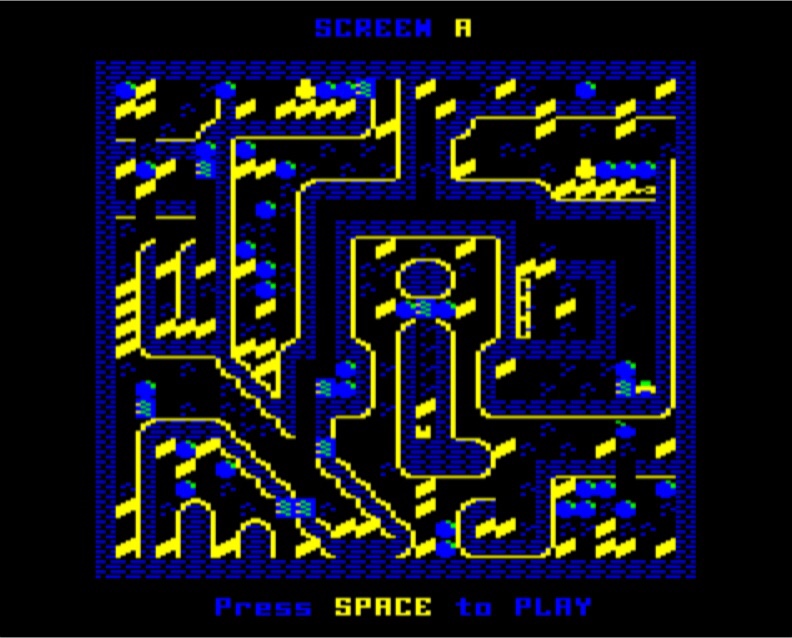
One of the first things that you realise playing Repton 3 is that almost every action has a consequence. A good example is very early on in the first level, you’ll come across across a boulder between two “holes” down to the next area, which contains four diamonds, an egg and a key, most of which are under more boulders. Your instinct is just push it down the hole in front of it rather than go down the first hole, back up the second and push it from the other way – and you can guess which is correct! And as much as that becomes part of its allure, not to mention its insane addictiveness, it can be really, really infuriating too, when not much later on you’ll be casually removing a piece of earth to find it’s caused a boulder to end up miles away and blocking your path a couple of minutes later, and it’s time to reach for the suicide button again! In the main, every screen is incredibly well designed though, and when you finally drop that last boulder into position a couple of screens below you, or work out how to direct those spirits into a cage, everything feels right with the world! Some of the puzzles are totally fiendish too, and while there’ll be times you’ll be panicking about escaping the monster you’ve just accidentally hatched, you’ll mostly be staring at the screen wondering how the hell you even get out of the first area on some of the levels! And then the clock’s run down and you start again. And again… And that password system really comes into its own at that point!

Repton has never been the best looking game on any system, but taken as a whole the individual design elements work just fine. The main character sprite, with its individually coloured head, top, trousers and lizard hands is truly iconic, until it starts moving – the animation is basic to say the least! If you leave him alone for too long he’ll start looking around impatiently, which is a nice touch, and in reality, once you’re moving around at pace and not really paying attention to the animation, it’s not so bad. The boulders are full of texture and the monsters look suitably Lovecraftian, but everything else is pretty basic. You’ll get to see all kinds of wacky colour combinations as you progress though, and the whole thing is pleasant enough, in a very Boulder Dash kind of way!
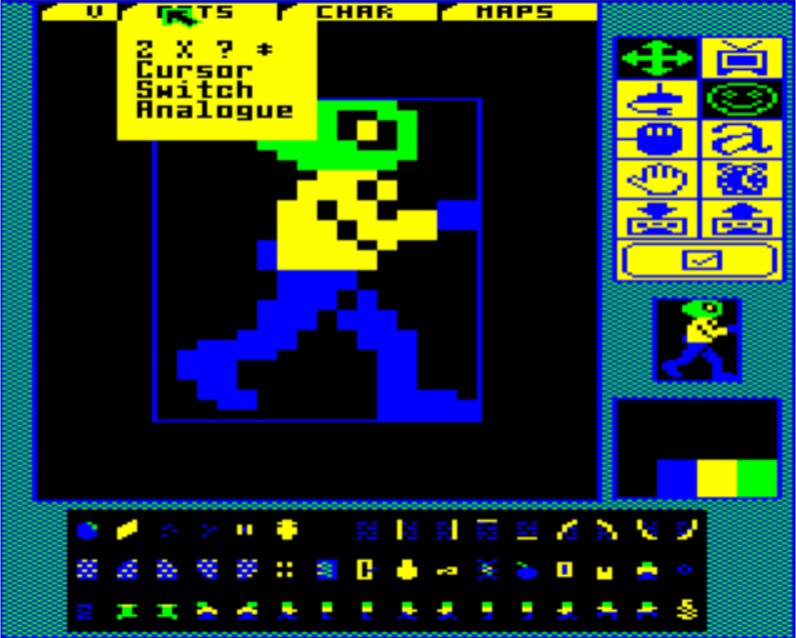
And if you don’t like it, you know what you can do! There’s a very good reason I’m not a games designer, so level editors are a bit wasted on me, but this turns out to be way more than a level editor – you can edit pretty much everything, with both screen designer and character designer tools included, and very comprehensive they are too! And as well as using keyboard or joystick, if you own one of those new-fangled mouse things, or even a trackball, you can use those if you wish, but regardless, the first thing that strikes you when you open it up today is that it’s going to be very familiar to anyone from the future that’s ever used Windows! Everything works from pull-down menus and icons, which in turn open up more options and tools. Selecting the character designer will present you with a huge list of pre-built characters, including Repton in his various angles, and from that base you can add or remove pixels to enhance it, change its colours and pretty much turn it into whatever you like. The screen designer allows you to open up any existing map (providing you’ve reached it in the game) and similarly move stuff about, add and remove, and all of it can be saved by additional passwords. It really is impressive even if it isn’t really for me!
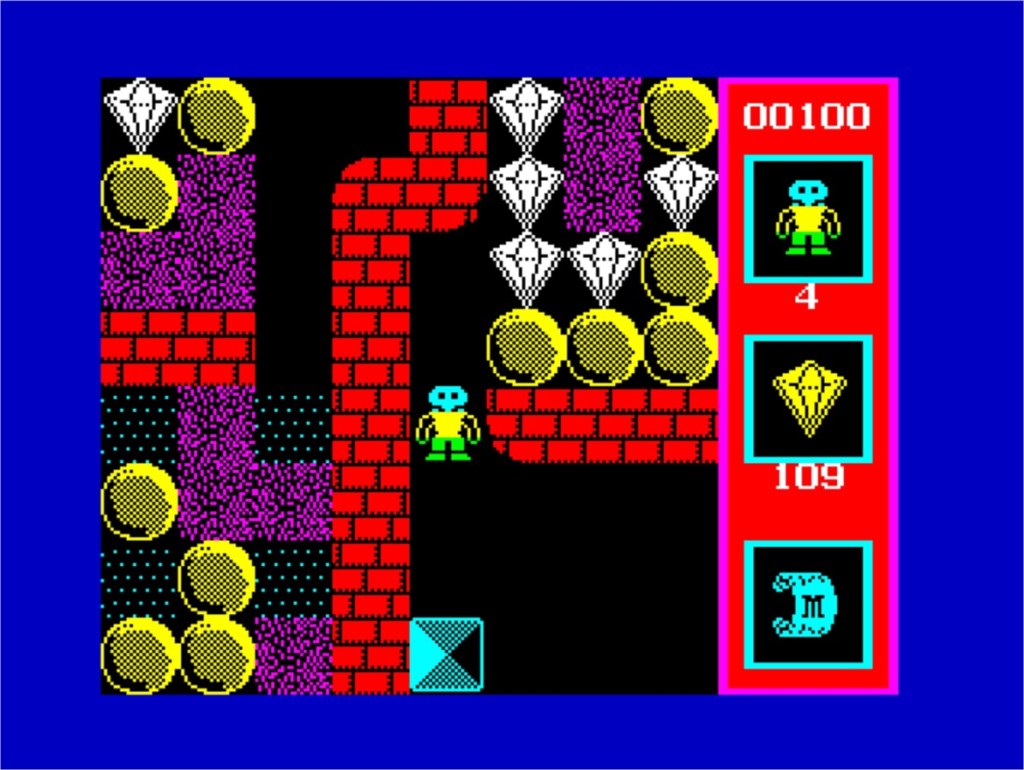
It was for someone though, because it spawned three themed Repton 3 file sets which were released as expansions to the original game, with Around the World in 40 Screens and The Life of Repton coming in 1987, and Repton Thru Time in 1988, and each of those also included it own editor to enable Repton infinity… Rather than Repton Infinity, which also came out as a standalone Repton games designer in 1988, with an additional game logic editor and also included a minor respin on Repton 3; Repton 4, which introduced photocopiers to Repton’s repertoire; Robbo, a weird robot thing; and Trakker, where you push fruit into monsters in a bulldozer! Despite the series selling around 125,000 units between 1985 and 1990, I’m not sure this one was responsible for that many of those though! It didn’t end there either, because in 1992 the Acorn Archimedes got EGO: Repton 4, which in reality was a reskinned port of Atari ST and Amiga obscurity Personality Crisis. Amazingly, there was a third Repton 4 too, originally fan-coded in 1988 then lost for twenty years, when it was rediscovered and reprogrammed and finally released (with Superior Software’s blessing) as Repton: The Lost Realms in 2010. And that was the same year we got iRepton on iPhone, which preceded iRepton 3 in 2014 to bring us back full circle. There were other ports in the interim, but before we close we must mention the legendary ZX Spectrum clone, Riptoff, which appeared exclusively on a Your Sinclair cover tape in 1991!
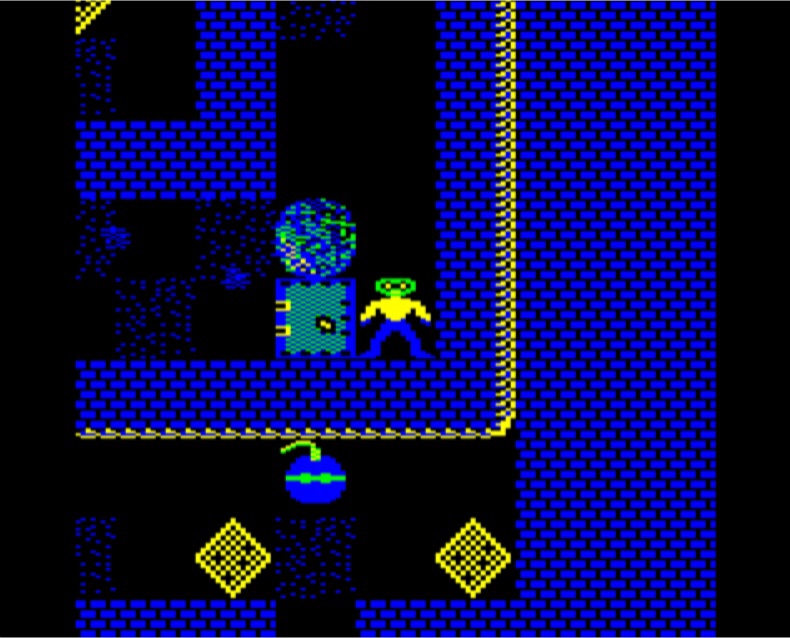
Probably stick with the original BBC versions is my advice though. And you can’t really go wrong with either Repton or Repton 3, and 2 is fine too but I just prefer the level-based play of the others. Repton 3 in particular is going to keep you occupied for ages! Don’t let only 24 “screens” fool you – every single one is going to drain your brain, but even when you’re making mistakes you’re gradually learning, and trying out new stuff is almost as rewarding as cracking a puzzle. And while there are arcade elements and a clock counting down to your doom, this is a puzzler at heart, but like its original inspiration Boulder Dash is on Commodore 64, if you’ve got a BBC it’s just about as essential as Elite and Chuckie Egg!


Thanks for that review – brought back lots of great memories! My favourite is Repton 1 though and love the music! Repton 3 good too, although bit too hard for me, only years later i completed the first two sections and maybe 2 or 3 screens off finishing the whole thing… Never played Repton 2 – too hard!
LikeLiked by 1 person
Nice one. Thank you! It’s a great series!
LikeLike